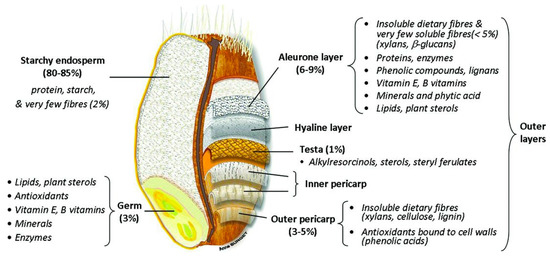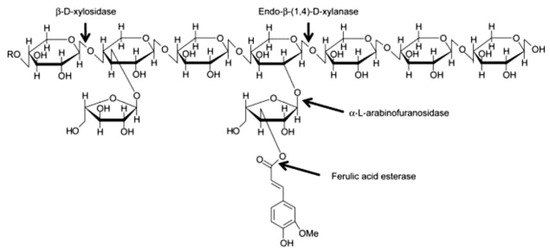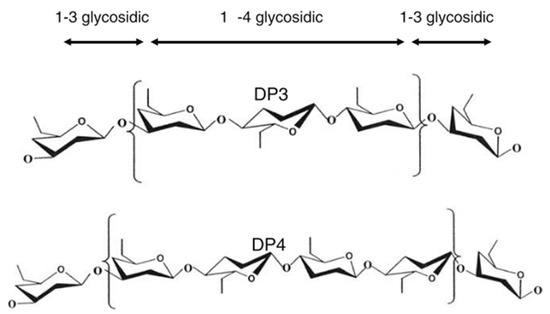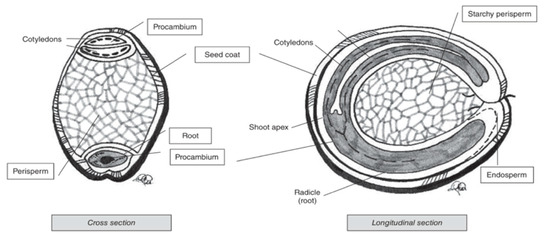The consumption of whole grain products is often related to beneficial effects on consumer health. Dietary fibre is an important component present in whole grains and is believed to be (at least partially) responsible for these health benefits. The dietary fibre composition of whole grains is very distinct over different grains. Whole grains of cereals and pseudo-cereals are rich in both soluble and insoluble functional dietary fibre that can be largely classified as e.g., cellulose, arabinoxylan, β-glucan, xyloglucan and fructan. However, even though the health benefits associated with the consumption of dietary fibre are well known to scientists, producers and consumers, the consumption of dietary fibre and whole grains around the world is substantially lower than the recommended levels. This review will discuss the types of dietary fibre commonly found in cereals and pseudo-cereals, their nutritional significance and health benefits observed in animal and human studies.
- dietary fibre
- cereals
- pseudo-cereals
- chronic diseases
Dear1. author, the following contents are excerpts from your papers. They are editable.Structure of Cereal Grains
1. Structure of Cereal Grains

2. Dietary Fibre Composition of Different Cereals
2.1. Dietary Fibre Composition of Wheat
| TDF | IDF | SDF | Reference | |
|---|---|---|---|---|
| Wheat (Triticum aestivum L., Triticum durum Desf.) | 11.6–17.0 | 10.2–14.7 | 1.4–2.3 | [38] |
| 10.2–15.7 | 7.2–11.4 | 1.9–2.9 | [39] | |
| 9.2 | - | - | [40] | |
| Oat (Avena sativa L.) | 13.7–30.1 | - | 11.5–20.0 | [41] |
| 10.3 | 6.5 | 3.8 | [23] | |
| 11.5–37.7 | 8.6–33.9 | 2.9–3.8 | [42] | |
| Barley (Hordeum vulgare L.) | 14.6–27.1 | 12.0–22.1 | 2.6–5.0 | [42] |
| 16.8–27.9 | - | - | [43] | |
| 10.1 | - | - | [44] | |
| Rye (Secalecereale L.) | 15.2–20.9 | 11.1–15.9 | 3.7–4.5 | [32] |
| 14.7–20.9 | 10.8–15.9 | 3.4–6.6 | [45] | |
| Rice (Oryza sativa L.) | 9.9 | 5.4 | 4.4 | [46] |
| 2.7–4.9 | 1.9–4.2 | 0.6–1.1 | [47] | |
| Corn (Zea mays L.) | 3.7–8.6 | 3.1–6.1 | 0.5–2.5 | [48] |
| 13.1–19.6 | 11.6–16.0 | 1.5–3.6 | [42] | |
| Amaranth (Amaranthus spp.) | 8.9–20.6 | - | - | [49] |
| 11.4 | 7.7 | 3.7 | [50] | |
| 11.8 | 9.1 | 2.7 | [51] | |
| Quinoa (Chenopodium quinoa Willd.) | 7–9.5 | 4.9–5.6 | 2.1–3.9 | [50] |
| 16.2–21.6 | - | - | [52] | |
| 11.6–15.1 | 9.9–12.2 | 0.4–2.9 | [53] | |
| Buckwheat (Fagopyrumesculentum Moench.) | 7.0 | 2.2 | 4.8 | [54] |
| 11.9 | 5.8 | 6.1 | [55] | |
| Teff [Eragrostis tef (Zucc.) Trotter] | 4.54 | - | 0.85 | [56] |
| Sorghum (Sorghum bicolor) | 7.55–12.3 | 6.52–7.90 | 1.05–1.23 | [57] |
| Millets (Eleusine coracana (L.) Gaertn.) | 13.0–13.8 | 12.5–13.2 | 0.52–0.59 | [58] |

2.2. Dietary Fibre Composition of Barley and Oats

2.3. Dietary Fibre Composition of Rye
2.4. Dietary Fibre Composition of Other Grains
3. Structure of Pseudocereal Grains

